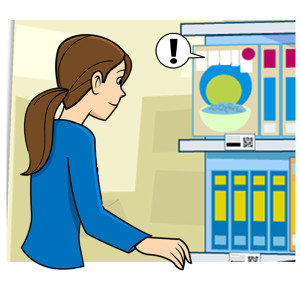Brands spend hundreds of thousands of dollars on in-store promotions, often with results that are hard to measure.
The provocative title of a new study out of Columbia University suggests that those efforts may not only be ineffective, but actually have a dampening effect on sales. In the study, titled When Shopper Marketing Backfires, the team coined their findings the ironic prudent-spending effect. They suggest that shoppers who consider themselves impulsive may actually act less impulsive in the presence of prompts like promotions.
Before you thrust your BOGO dangler through your heart in despair, and give up on promotions forever, let’s look a bit deeper at the study, and what you can take away from the findings.
Among other topics, the study predicted these outcomes:
1) “Shoppers who are exposed to tempting shopping prompts may spend less than those who are not exposed to the shopping prompts (The ironic prudent-spending effect.)”
2) “The more shoppers perceive themselves to be chronically impulsive, the stronger is the ironic prudent-spending effect on them.”
Simply put, that bargain offer may actually increase a shopper’s resolve not to waste money – and the more frivolous the item the stronger their resistance! How could this be? How could a bargain, a BOGO, a get-more-for-less offer do anything except drive consumers to their expected spending frenzy?
Suspicious, we dug into the details, and found a few variables that may let you get to sleep tonight:
First, as the co-author of the study, Leonard Lee, Associate Professor, Marketing Division, Columbia Business School, cautions, the study demonstrates a particular outcome, not a universal truth. Here are a few of the reasons why:
Of necessity, they studied shoppers in minimarts and convenience stores in university neighborhoods. The average spend per visit in these stores is very low ($5, two items), and the time spent in store is lower than in a grocery store, with its many more stimulating sights, scents, and sounds. Promotions in a supermarket setting may have very different results.
Further, the test defined the ‘prompt’ as the offer of a basket. The tester, posing as an employee, offered shoppers a basket to induce them to purchase more items, plus a $1 coupon. In the study, shoppers who were offered a basket, regardless of whether they accepted or rejected the basket, spent less than those who were not offered a basket. We wonder if a more product-specific “tempting shopping prompt” (such as a BOGO) might provide a different outcome.
The study concluded that the “early reminder of upcoming temptations ironically invokes restraint in shopping and may result in more prudent spending rather than lead to splurging.”
So what’s a brand marketer to do?
Well, how much shoppers spent also depended on whether the product was utilitarian (like soap or batteries) or indulgent (like ice cream). The more indulgent the product, the stronger the consumers’ resistance to purchase. And the effect was strongest with consumers who describe themselves as impulsive purchasers.
Which made us think back to all those mid-90s campaigns urging us to ‘indulge’ ourselves.
According to this study, that’s exactly the kind of message that makes us feel more restrained. That ‘temptation’ message seems to wake up our ‘better’ natures to argue against indulgence. The proverbial angel and demon are still on our shoulders, whispering in our ears.
So how does an indulgent brand overcome consumer resistance? Although the Columbia team hasn’t researched this yet, we discussed the possibility that adding a utilitarian message to the offer could help overcome the resistance.
For the shopper, it might go something like this:
Store sign: Ice cream on sale – buy one get one half off!
Shopper: “Oh ice cream is indulgent – two would be twice as bad!”
Second store sign: A real dairy treat for your family!
Shopper: “Dairy is good for us. And I like making my family happy. Hm. Two flavors would make everyone happy!”
If the normally impulsive shopper is looking for a justification, turning the negative indulgence into the positive ‘making my family happy’ (a prime motivation of mom shoppers) may be enough to get that treat into the basket.
As we said, this is yet to be tested, but when fighting for your share of a shrinking grocery budget, it’s worth giving a go. And if it does work, give us a shout, would you?
